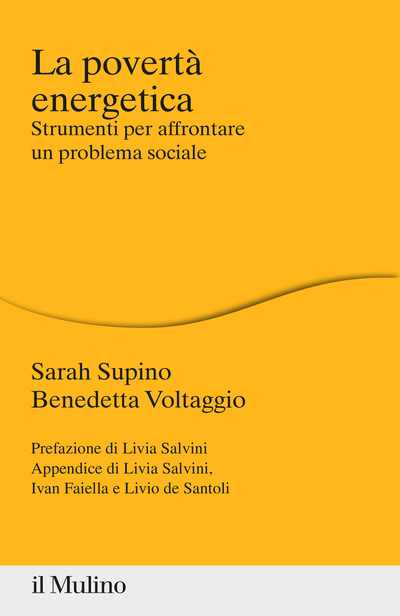Publications
La povertà energetica
La povertà energetica, Strumenti per affrontare un problema sociale, Edited by Il Mulino, 2019
Energy poverty is a phenomenon that affects those who do not have access to adequate and reliable supplies of electricity and gas due to the lack of sufficient economic resources. Its main driving forces are low income levels, high energy costs and high consumption, due to the poor energy performance of buildings. The problem of energy poverty is the subject of numerous studies and debates within the main international organisations (such as the UN and the European Union) and some European and non-European States now have a very long experience in contrasting the phenomenon. Italy, on the other hand, was not exposed "on the front line" in contrasting the problem, although there was no lack of contributions on the subject, such as the economic one promoted in 2014 by the Bank of Italy. Nevertheless, in recent years, Italian attention to energy poverty has increased more and more; lastly, ample space has been given to the topic in the Proposal of the Integrated National Plan for Energy and Climate for Italy of December 31, 2018 sent to the European Commission by the Ministry of Economic Development, by the Ministry of Environment and Territory and Sea Protection and by the Ministry of Infrastructures and Transport. In the Proposal, the causes and level of diffusion in Italy of energy poverty are analysed and, above all, some possible actions to contrast it are identified. In this context, however, there was no study that dealt with the topic organically, jointly examining all the legal, economic and social profiles. The book "Energy Poverty - tools to tackle a social problem" was created from research conducted by the lawyers Sarah Supino and Benedetta Voltaggio of the Firm Salvini Escalar & Associati and coordinated by Livia Salvini, Professor of Tax Law at the LUISS Guido Carli Department of Law which Ivan Faiella, senior economist of the Bank of Italy and Livio de Santoli, Professor of Technical Physics at the Department of Astronautical, Electrical and Energy Engineering of La Sapienza University of Rome subsequently joined. The book is the result of these synergies between different languages, categories and logics, specific to each of the scientific branches involved (legal, economic and engineering) and aims to describe the problem in its social and economic, national and international dimension, providing data on its diffusion, outlining its causes and trying to offer some solutions, also based on the experiences of States that for many years have been engaged in contrasting the phenomenon. Among the main areas of intervention, the following play a role of primary importance: - taxation, in its aptitude to act as a promotional tool aimed at the energy-poor, also by means of intrusive purpose measures which add to the primary purpose of the withholding (namely contribution to public expenses) additional social goals of an “extra-tax” nature and that are built in terms of advantages also for companies operating in the energy sector; - the promotion of interventions to support energy efficiency through measures structured so as not to determine the regressive effects on consumers and usable even by subjects who are in poverty; - the role of public and private actors, primarily businesses, for which the issue of access to energy is presented as an expression of social solidarity, but also as an opportunity for development and investment. Work havens are therefore very articulated, of topical relevance and aimed at enhancing the functions and skills of all the actors in the energy sector, in order to solicit attention on the subject and provide the tools to introduce, in practice, a mix of social and fiscal measures, specific incentives to companies and individuals and legal and technical tools for energy optimisation of buildings and rationalisation of charges in the bill; all on the basis of a compensation mechanism between private expenditure and public expenditure that is based on social equity criteria.








